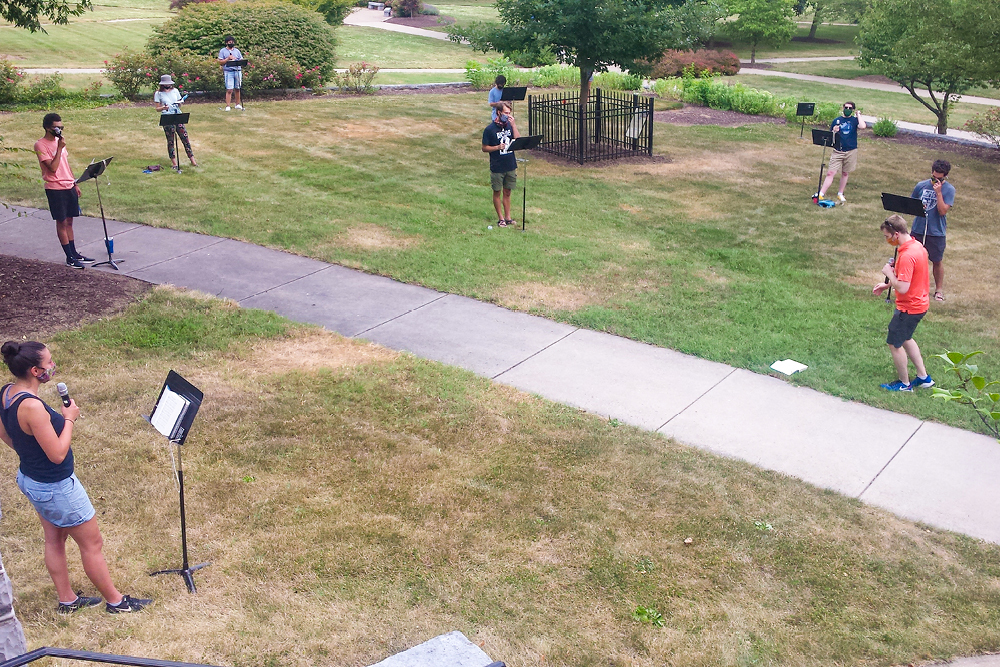This summer, Eastern Mennonite University music professor Benjamin Bergey has been reading…and reading…and reading. For a while, not a week would go by without more new information about aerosolization, how particles are spread, and the role of speaking or singing in viral transmission of COVID-19.
Top of mind for Bergey, who directs EMU’s large University Choir and the smaller Chamber Singers: When classes reconvene for fall semester, can he find a way to bring his vocalists together safely?

Singing indoors in an enclosed space is now widely recognized as having the potential to be a “super-spreader event” for COVID-19 and choir directors are urged to find other creative ways to rehearse, according to the Performing Arts Medical Association and other sources.
On a recent scorching Sunday afternoon outside Lehman Auditorium, Bergey convened a group of local students to test process, timing, and technology – an experiment for his EMU singers but also as a model for other choral groups who might be interested in creative measures.
The masked singers, 13 invitees in all, were positioned 12 feet apart with wireless microphones. Bergey wanted to test two methods for hearing each other with such distant spacing. The first method was to send the sound output through an FM transmitter and equip each singer with an individual FM radio.
The group, however, was unable to find a channel that worked. (“All I hear rap,” said one singer. “That’s probably just in your brain,” chimed in another.)
The second method, using a loudspeaker, worked best.
How could they keep from singing?
Through all the tumult and the strife,
I hear that music ringing
It finds an echo in my soul
How can I keep from singing?
To a silent campus …
Don’t be afraid. My love is stronger than your fear.
And I have promised, promised to be always near.
To drying leaves and withered bark …
Rain down
Rain down
Rain down your love on your people
They called out the numbers of hymns to sing, to hear: 118, 124, 105, 495…
Bergey played the keyboards. Amidst mutual urging, department chair Professor David Berry left videography behind and took over accompaniment.
For most, it was the first singing together in company for at least six months. Virtual singing was no match.
Bergey called for one final hymn. “606” was the answer.
Praise God, from whom all blessings flow
“I think we’ll stop there,” Bergey said. “There’s a lot to process and a lot going on … but it was good to sing together. Thanks for getting creative with me.”
“Thank you,” said one student.
“Yes,” said another, 12 feet away.
“Yes,” said another, 12 more feet away, as if simple affirmation was all that was needed.
“Yes,” said Bergey. “Yes.”

Love this! So wonderful to hear a chorus again!
Best wishes in this, Ben, and prayers that it works without Covid-19 striking.
Now that made my day!!! Both inspirational and full of hope. Thank you Ben for your hard work.
Thank you for being creative and finding a way to create music in a pandemic. This truly brightened my day!